Description
The pelvis, the seat of life and strength
An energy centre, the link with the original matrix, the pelvis is truly the seat of life. Via the lower limbs and the feet, the pelvis is the dynamic expression of our relationship with the ground and our bearings. It also supports the spine. The balance of the lumbar/sacral joint fully governs how the spine can stretch and stay erect.
Due to the insertion of the strong muscles in the abdominal wall and base of the back, which line the mobile space between the base of the chest, the hip ridge and the pubis, the pelvis is the actual centre of movements and the seat of strength in man. Its balance and freedom of movement play a crucial part in the organization of many functions, such as breathing, digestion, sexual activity, walking etc…
The hip also plays an essential role in the positioning of the pelvis in relation to the legs and so ensuring a stable and functional foundation for the trunk, arms and head. As such, it contributes to the equilibrium of the spinal column and the back. Indeed, be it for stability in standing or in sitting, the liberty of the pelvis in relation to the legs (therefore the freedom in the hip joints) influences the dynamics of the joint between the sacrum and the lumbar spine (L5/S1) and stimulates the true reflex of the spine for upright posture.
This allows the back to be carried erect, while maintaining force and mobility with minimum muscular engagement thus also allowing the development of deeper and fuller breathing.
By relaxing the abdominal wall and posterior pillars of the diaphragm, we shall breathe more freely and gain flexible tonicity of abdominal support.
- Imagining movements of the pelvis while sensing how the whole skeleton follows and adjusts. – Duration : 55’
- Moving the pelvis on the clock (12 to 6). Initiating movement from different places and in different configurations – Duration : 1H25’
- Bringing the pelvis to roll (12 to 6) by moving the sitting bones (in sitting, lying on the back, on hands and knees) – Duration : 1H17’
- Learning to open the front part of the lumbar spine (in different positions) – Duration : 1H21’
- Exploring the pelvic movement in relation to low abdominal muscular differentiation – Duration : 1H18’
- Exploring internal/external rotation of the leg in relation to gluteal muscle differentiation – Duration : 1H05’
- Rolling the pelvis left and right(3 and 9 on a clock). Turning around a clear axis (from lying on the back to the lying on the stomach) – Duration : 1H27’
- Getting to know the pelvic floor more, through sliding movements of the muscle´s tissues – Duration : 1H06’
- Moving the pelvis three dimensionally – Duration : 1H36’




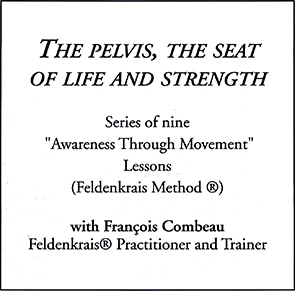
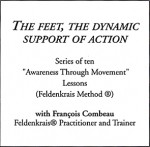
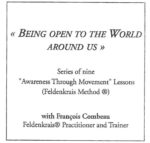
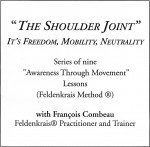
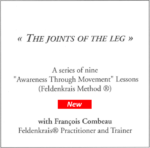
Avis
Il n’y pas encore d’avis.